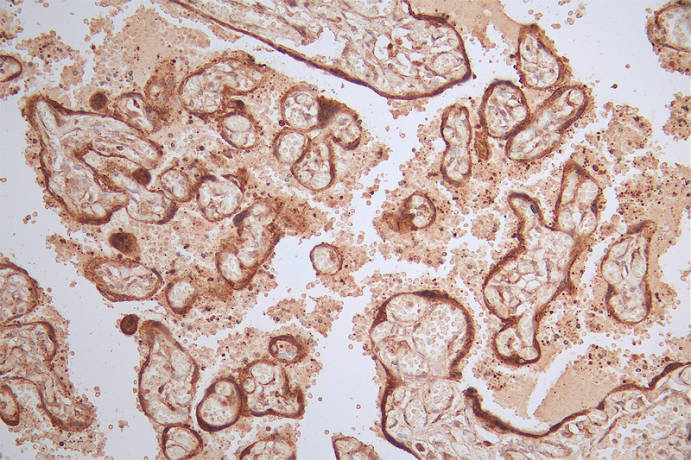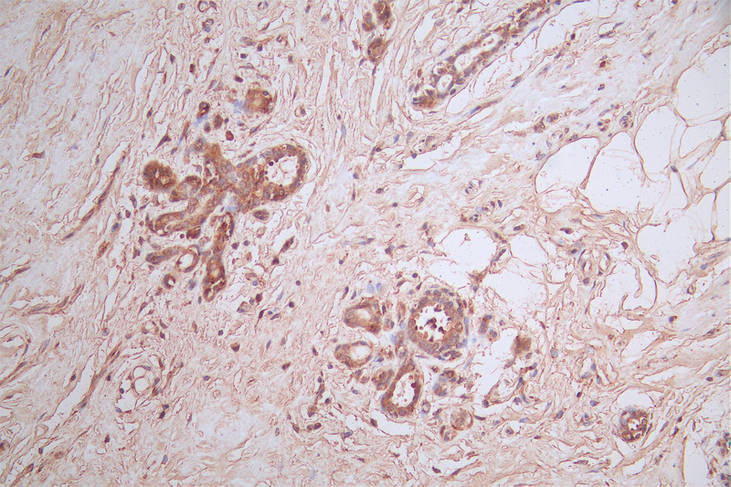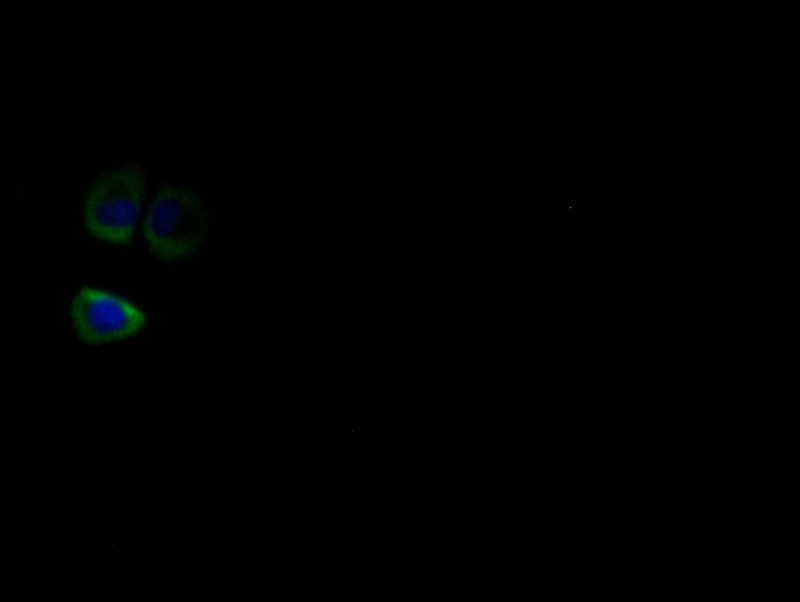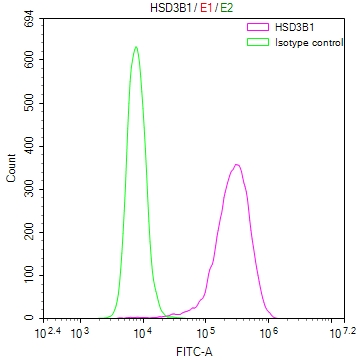Through the utilization of in vitro expression systems, the HSD3B1 recombinant monoclonal antibody is synthesized by cloning DNA sequences of HSD3B1 antibodies sourced from immunoreactive rabbits. The immunogen employed in this process is a synthesized peptide derived from the human HSD3B1 protein. Subsequently, the genes encoding the HSD3B1 antibodies are inserted into plasmid vectors, and these recombinant plasmid vectors are then transfected into host cells to enable antibody expression. The HSD3B1 recombinant monoclonal antibody undergoes affinity-chromatography purification and is rigorously tested for functionality in ELISA, IHC, IF, and FC applications, displaying reactivity with the human HSD3B1 protein during these assessments.
HSD3B1 is a key enzyme in steroidogenesis, catalyzing the conversion of pregnenolone to progesterone. Its activity is essential for the production of various steroid hormones, including sex steroids, glucocorticoids, and mineralocorticoids, which have critical roles in reproductive function, stress response, and various physiological processes in both males and females.







